Let's explore some of the most popular flowers that start with P. From showy perennials to delicate annuals, the post could showcase a wide range of flowers that are sure to inspire and delight.
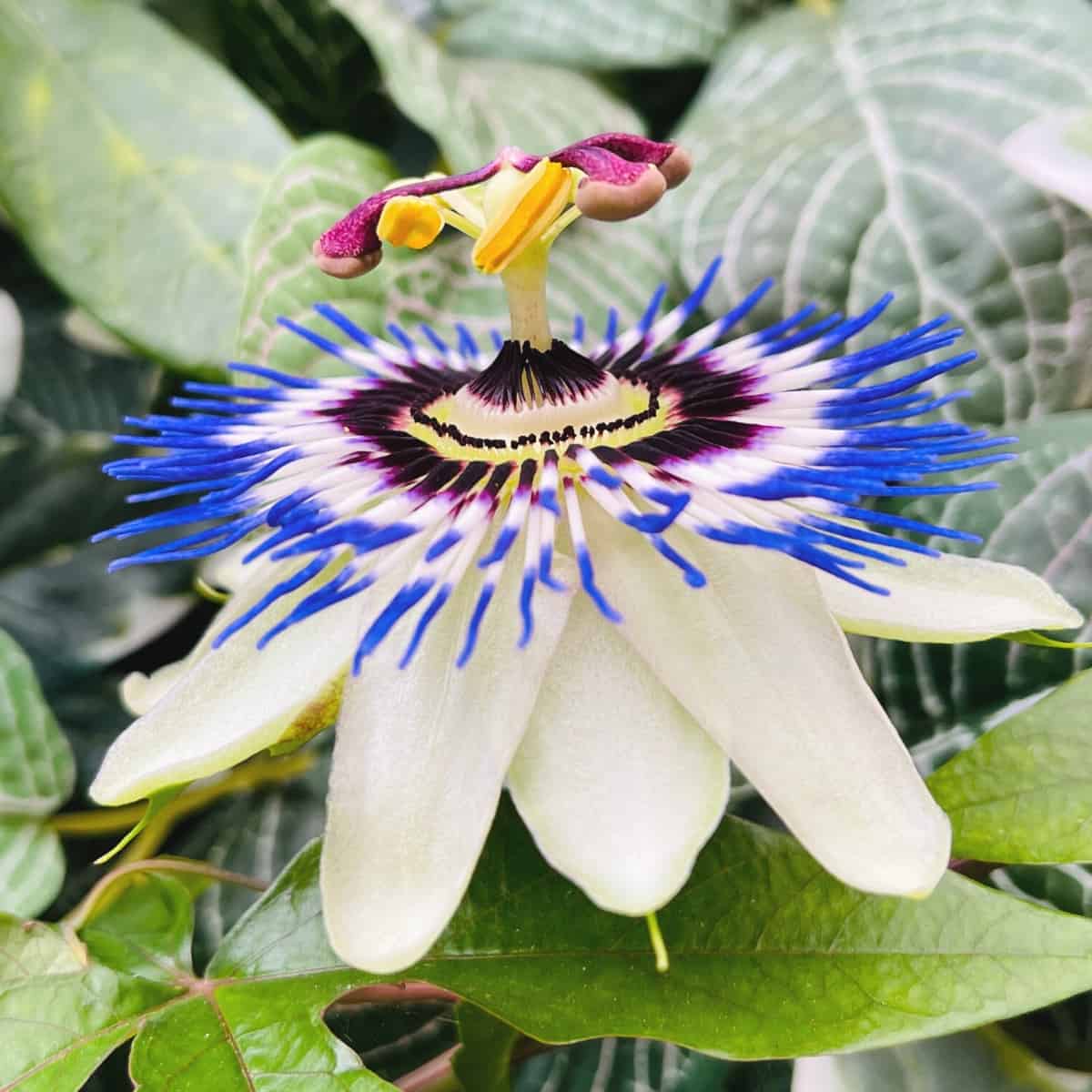
Jump to:
- List of Flowers That Start with the Letter P
- 1. Peony
- 2. Poppy
- 3. Primrose
- 4. Pansy
- 5. Protea
- 6. Poinsettia
- 7. Peacock Orchid
- 8. Pink Jasmine
- 9. Periwinkle
- 10. Penstemon
- 11. Prickly Pear
- 12. Petunia
- 13. Painted Daisy
- 14. Prairie Smoke
- 15. Passiflora
- 16. Pelargonium
- 17. Pentas
- 18. Phalaenopsis
- 19. Persian Buttercup
- 20. Phlox
- 21. Pincushion Flower
- 22. Pink
- 23. Plantain Lily
- 24. Plumeria
- 25. Portulaca
- 26. Protea
- 27. Pink Lady's Slipper
- 28. Peruvian Lily
- 29. Purple Coneflower
- 30. Pencil Cholla
- 31. Pyracantha
- 32. Pot Marigold
- 33. Pineapple Sage
- 34. Polka Dot Plant
- 35. Pineapple Lily
- You Might Also Like
- 💬 Comments
List of Flowers That Start with the Letter P
1. Peony
Peonies are one of the most popular flowers that start with P. They are native to Asia, Europe, and North America and are known for their large, showy blooms. Peonies come in a range of colors, including pink, red, yellow, and white flowers, and they have a sweet, fragrant scent. They bloom in late spring to early summer and are a favorite among gardeners and florists.
In ancient China, peonies were regarded as the “king of flowers” and were prized for their beauty and medicinal properties. In Western cultures, peonies represent honor, prosperity, and romance. They are often used at weddings and symbolize a happy marriage and good fortune.
2. Poppy
Poppies are a group of flowers that come in a variety of colors, including red, pink, orange, and yellow. They are known for their delicate, papery petals and are native to Europe, Asia, and North America. Poppies bloom in late spring to early summer and are often used in gardens and flower arrangements.
In ancient Greece, the poppy flower was associated with the god of sleep, Morpheus, and was believed to have a sedative effect.
3. Primrose
Primroses are a group of flowers that come in a range of colors, including pink, purple, yellow, and white. They are native to Europe and Asia and are known for their early spring blooms. Primroses have a sweet, delicate scent and are often used in gardens and as houseplants.
In ancient times, primroses were used in medicinal remedies to treat a variety of ailments. In Western cultures, primroses represent youth, new beginnings, and love. They are often used in weddings and are a symbol of eternal love.
4. Pansy
Pansies are a group of flowers that come in a range of colors, including purple, yellow, white, and blue flowers. They are native to Europe and are known for their colorful flowers and heart-shaped petals. Pansies have a sweet, delicate scent and are often used in gardens and as houseplants.
In ancient Greece, pansies were associated with love and were often used in love potions. In Western cultures, pansies represent free thought, creativity, and remembrance. They are often used in funerals and as a symbol of remembrance for loved ones.
5. Protea
Proteas are a group of flowers that come in a range of colors, including pink, red, and white. They are native to South Africa and are known for their unusual, spiky appearance. Proteas bloom from late fall to early spring and are often used in flower arrangements.
In South Africa, proteas are the national flower and represent diversity and courage. In Western cultures, proteas are a symbol of strength, perseverance, and transformation.

6. Poinsettia
Poinsettias are a group of flowers that come in a range of colors, including red, white, and pink flowers. They are native to Central America and are known for their distinctive, star-shaped leaves. Poinsettias bloom in winter and are often used in holiday decorations and as houseplants.
In ancient Aztec culture, poinsettias were used in religious ceremonies and were believed to have healing properties. In Western cultures, poinsettias represent joy, hope, and celebration. They are often used in Christmas decorations and are a symbol of the holiday season.
7. Peacock Orchid
Peacock orchids are a group of flowers that come in a range of colors, including white, pink, and purple. They are native to Africa and are known for their distinctive, peacock-like blooms. Peacock orchids bloom in late summer and are often used in gardens and as cut flowers.
In ancient Egypt, peacock orchids were associated with the goddess of love, Isis, and were often used in love potions. In Western cultures, peacock orchids represent beauty, grace, and elegance. They are often used in weddings and are a symbol of purity and innocence.
8. Pink Jasmine
Pink jasmine is a flowering vine that is native to China and Southeast Asia. It is known for its fragrant, pink blooms and is often used in gardens and as a houseplant. Pink jasmine blooms in spring and summer and is a favorite among gardeners and florists.
In ancient Chinese culture, pink jasmine was associated with love and romance and was often used in love spells. In Western cultures, pink jasmine represents grace, elegance, and femininity. It is often used at weddings and is a symbol of eternal love.
9. Periwinkle
Periwinkle, also known as vinca, is a beautiful flowering plant that is native to Europe and Asia. It has long been used in traditional medicine to treat a variety of ailments, and its leaves and stems contain alkaloids that have been shown to have anti-cancer and anti-diabetic properties.
In terms of symbolism, periwinkle is often associated with loyalty, friendship, and eternal love, making it a popular choice for weddings and other romantic occasions. Its delicate flowers and glossy leaves also make it a favorite for gardens and landscaping, adding a touch of elegance and beauty to any space.
10. Penstemon
Penstemons are a group of flowers that come in a range of colors, including pink, purple, and blue. They are native to North America and are known for their tubular, bell-shaped blooms. Penstemons bloom in late spring and summer and are often used in gardens and as cut flowers.
In Native American culture, penstemons were used in traditional medicine to treat a variety of ailments. In Western cultures, penstemons represent strength, resilience, and adaptability. They are often used in drought-tolerant gardens and are a symbol of the American West.

11. Prickly Pear
Prickly pear cacti are a group of succulent plants that produce large, showy flowers in shades of pink, red, and yellow. They are native to North and South America and are often grown for their fruit, as well as for their ornamental value. They are especially abundant in central Arizona.
Prickly pears have a long history of cultivation and use by indigenous cultures in the Americas. The prickly pear cactus was used for its nutritious fruit, as well as for its medicinal properties, which were said to include the treatment of diabetes, high cholesterol, and other ailments. In terms of symbolism, prickly pears have been associated with resilience and endurance, as they are able to thrive in harsh desert environments despite their prickly exterior. They have also been used in traditional ceremonies and as a symbol of fertility and abundance.
12. Petunia
Petunias are a group of flowers that come in a range of colors, including pink, purple, and white. They are native to South America and are known for their large, trumpet-shaped blooms. Petunias bloom in summer and are often used in gardens, hanging baskets, and as bedding plants.
In ancient times, petunia flowers were used in traditional medicine to treat a variety of ailments. In Western cultures, petunias represent success, achievement, and ambition.
13. Painted Daisy
Painted daisies, also known as Tanacetum coccineum, are a group of flowering plants that produce vibrant, daisy-like blooms in shades of pink, red, and white. They are native to Europe and Asia and are often used in gardens and as cut flowers.
The Painted daisy is known for its attractive, feathery foliage and its ability to attract pollinators such as bees and butterflies. It is also drought-tolerant and easy to grow, making it a popular choice for low-maintenance gardens.
14. Prairie Smoke
Prairie smoke, also known as Geum triflorum, is a native North American wildflower. It is known for its delicate, pinkish-purple blooms and feathery seed heads that resemble smoke. Prairie smoke blooms in spring and is often used in wildflower gardens and as a ground cover.
In Native American culture, prairie smoke was used in traditional medicine to treat a variety of ailments. In Western cultures, prairie smoke represents resilience, adaptability, and survival. It is often used in drought-tolerant gardens and is a symbol of the American prairie.
15. Passiflora
Passiflora, commonly known as passion flowers, are a group of flowering plants that produce intricate and colorful blooms in shades of pink, purple, blue, and white. They are native to South and Central America and are often used as ornamental plants.
Passionflowers, also known as Passiflora, have a long history of use by indigenous cultures in South America for their medicinal properties. They were also used in traditional ceremonies and as a symbol of spiritual connection and transcendence. The name "passionflower" comes from the Christian tradition, where the flower's unique structure was seen as a representation of the crucifixion of Jesus Christ. The three stigmas represent the three nails used to crucify Jesus, the five anthers represent the five wounds he received, and the tendrils represent the whips used to scourge him. Today, passionflowers are still appreciated for their beauty and symbolism, which include passion, spirituality, and transformation.
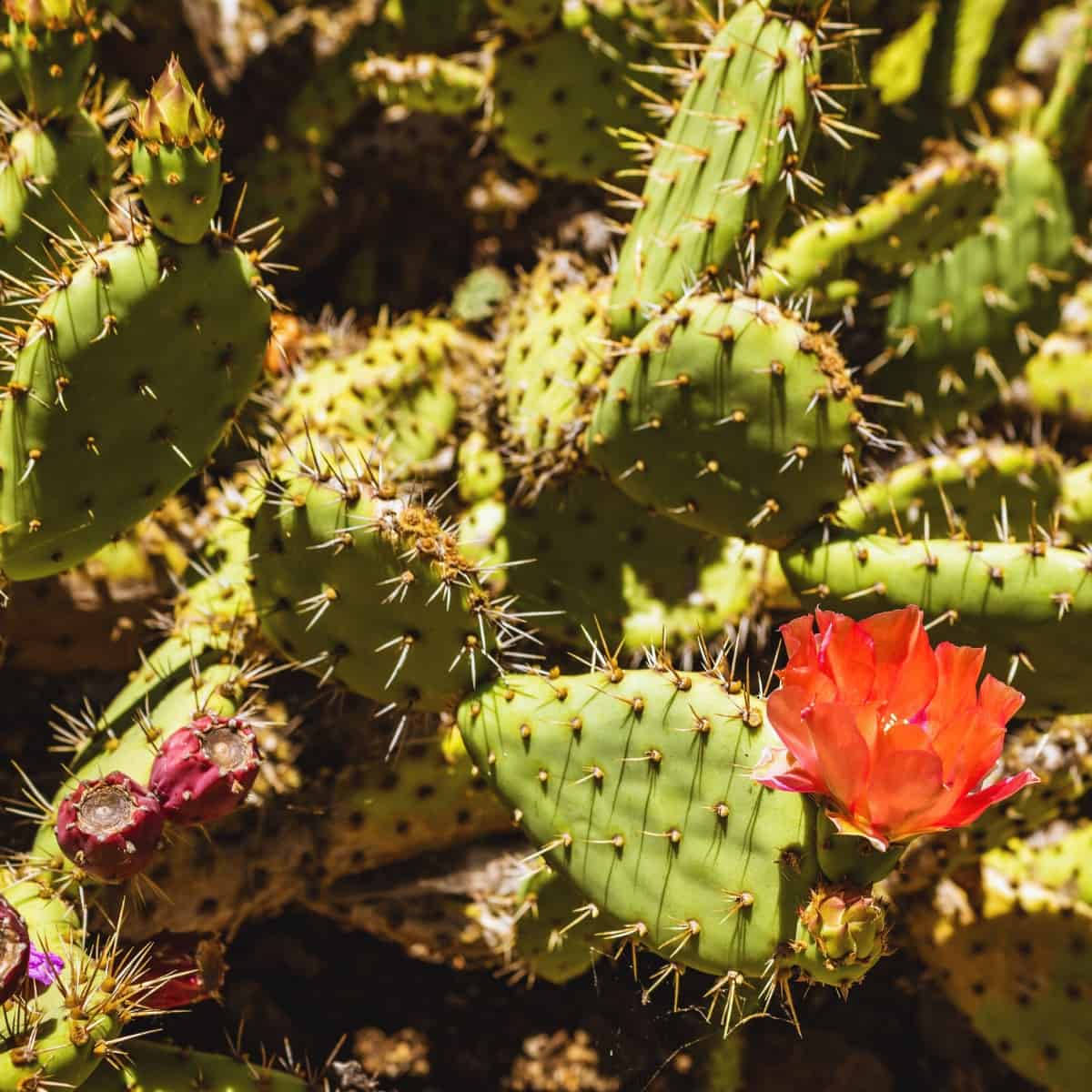
16. Pelargonium
Pelargoniums, commonly known as geraniums, are a group of flowering plants that produce brightly colored flowers in shades of pink, red, orange, and white. They are native to South Africa and are often used in gardens and as houseplants.
Geraniums have been cultivated for their beauty and fragrance since ancient times. They were highly prized by the ancient Egyptians and later by the Greeks and Romans, who used them in perfumes and for medicinal purposes. In Victorian times, geraniums were popular in gardens and were often used as a symbol of gentility and refinement. Today, geraniums are still appreciated for their beauty and are a popular choice for gardens and window boxes. In terms of symbolism, geraniums are often associated with friendship, loyalty, and affection, making them a popular choice for gifts and as a way to express sentiments of love and admiration.
17. Pentas
Pentas, also known as starflowers, or Pentas lanceolata, is a group of flowering plants that produce clusters of small, star-shaped flowers in shades of pink, red, and white. They are native to Africa and are often used in gardens and as cut flowers.
Pentas are native to Africa and have been cultivated for their striking blooms since the early 1900s. They are named after the Greek word "penta," which means five, in reference to their five-petaled flowers. In terms of symbolism, pentas are often associated with love and romance, as well as with the number five, which is seen as a symbol of balance and harmony. Pentas are also popular with pollinators, particularly butterflies, which are attracted to their brightly colored blooms.
18. Phalaenopsis
Phalaenopsis, commonly known as moth orchids, are a group of orchids that produce large, showy, exotic flowers in shades of pink, purple, and white. They are native to Southeast Asia and are often used as houseplants.
Phalaenopsis have been cultivated in Asia for centuries and were first introduced to the Western world in the 18th century. They are prized for their delicate, butterfly-like blooms and have become one of the most popular orchids in the world. In terms of symbolism, Phalaenopsis orchids are often associated with beauty, elegance, and refinement, and are frequently used in weddings and other formal occasions. They are also a symbol of love, particularly in Asian cultures where they are given as gifts to express feelings of affection and admiration. Today, Phalaenopsis orchids are widely available and are a popular choice for indoor plants, particularly for those who appreciate their exotic beauty and ease of care.
19. Persian Buttercup
Persian buttercups, also known as Ranunculus, are a group of flowering plants that produce delicate, cup-shaped blooms in shades of pink, red, orange, yellow, and white. They are native to Asia and are often used in gardens and as cut flowers. The Persian buttercup is known for its bright, cheerful blooms and its long-lasting cut flowers, making it a popular choice for floral arrangements and bouquets.
Persian buttercups have been cultivated for their vibrant, multi-layered blooms since ancient times. They are native to Asia and were highly prized by the Persians, who used them in their art and as a symbol of love and affection. In the Victorian language of flowers, ranunculus was associated with charm and attractiveness and was often used to convey messages of admiration and respect. Today, Persian buttercups remain popular for their beauty and symbolism, which include radiant charm, attraction, and a message of undying love. They are a popular choice for bridal bouquets, and floral arrangements, and as a way to add a touch of elegance and beauty to any space.
20. Phlox
Phlox, also known as creeping phlox, is a group of flowering plants that produce clusters of small, fragrant flowers in shades of pink, purple, and white. They are native to North America and are often used as ground covers and in rock gardens.
Phlox, also known as "flame flowers," has a long history of cultivation in gardens and were highly prized by Native American tribes for its medicinal properties. They were later introduced to Europe in the 18th century, where they quickly became popular as ornamental plants. In terms of symbolism, phlox are often associated with harmony, balance, and unity, making them a popular choice for gardens and floral arrangements that are intended to convey a sense of peace and tranquility.
They are also a symbol of good fortune and are believed to bring happiness and success to those who cultivate them.
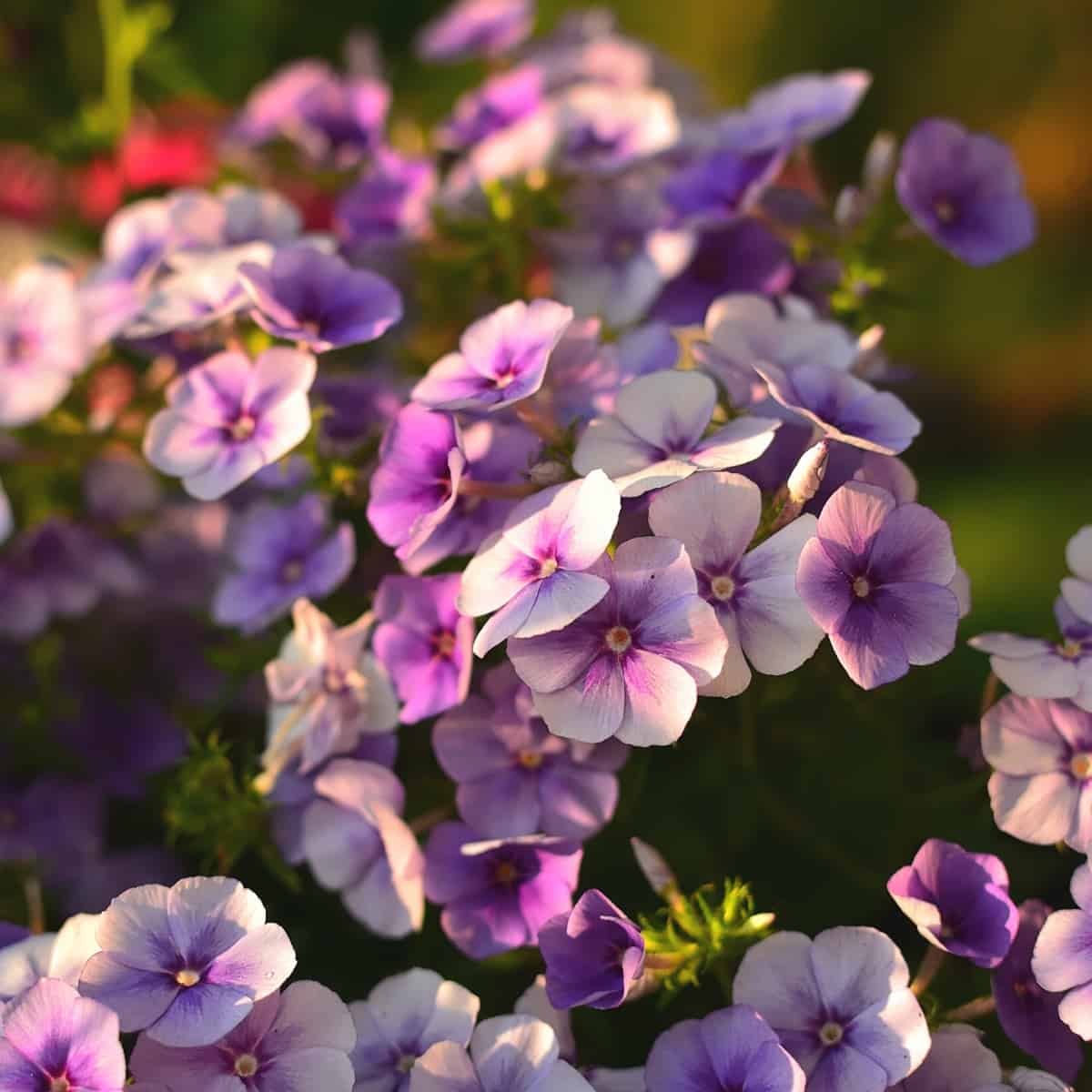
21. Pincushion Flower
Pincushion flowers, also known as scabious, are a group of flowering plants in the honeysuckle family, that produce delicate, pincushion-like blooms in shades of pink, purple, and white. They are native to Europe and are often used in gardens and as cut flowers.
Pincushion flowers have been cultivated for their striking, pincushion-like blooms since the 16th century. They are native to Europe and Africa and were highly valued by the ancient Greeks for their medicinal properties. In terms of symbolism, pincushion flowers are often associated with purity, innocence, and simplicity, and are a popular choice for wedding bouquets and other romantic occasions.
They are also a symbol of healing and protection, and were traditionally used in herbal remedies to treat a variety of ailments.
22. Pink
Pink, also known as Dianthus, or common pink, is a group of flowering plants that produce delicate, fragrant blooms in shades of pink, red, and white. They are native to Europe and Asia and are often used in gardens and as cut flowers.
Dianthus, also known as "pinks," have been cultivated for their fragrant and delicate blooms since ancient times. They are native to Europe and Asia and were highly prized by the Greeks and Romans, who used them in their art and as a symbol of love and beauty. In the Victorian language of flowers, dianthus was associated with love, admiration, and gratitude, and was often used to convey messages of appreciation and affection.
Today, dianthus remain popular for their beauty and symbolism, which includes deep affection, pure love, and admiration.
23. Plantain Lily
Plantain lilies, also known as hostas, are a group of flowering plants that produce large, lush leaves and spikes of delicate, trumpet-shaped flowers in shades of pink, purple, and white. They are native to East Asia and are often used in gardens and as houseplants.
Plantain lilies have been cultivated for their lush foliage and elegant blooms for centuries. They were introduced to Europe in the 18th century, where they quickly became popular as ornamental plants. In terms of symbolism, hostas are often associated with loyalty, devotion, and resilience, making them a popular choice for gardens and as a way to convey a sense of steadfastness and steadfast love. They are also a symbol of transformation and growth and are believed to bring positive energy and good fortune to those who cultivate them.
24. Plumeria
Plumerias, also known as frangipani, is a group of flowering plants that produce fragrant, waxy blooms in shades of pink, red, yellow, and white. They are native to Central and South America and are often used in gardens and as cut flowers.
Plumeria flowers have been cultivated for their stunning blooms and sweet fragrance since ancient times. They are native to Central America, Mexico, and the Caribbean, but have been introduced to many tropical and subtropical regions around the world. In terms of symbolism, plumeria is often associated with love, devotion, and new beginnings, making them a popular choice for weddings and other romantic occasions.
They are also a symbol of immortality and are often used in religious and spiritual ceremonies to honor the dead and guide them on their journey to the afterlife.
25. Portulaca
Portulacas, also known as moss roses or sun roses, are a group of flowering plants that produce small flowers in shades of pink, orange, red, and yellow. They are native to South America and are often used in gardens and as ground covers.
Portulaca has been cultivated for its vibrant, jewel-toned blooms since ancient times. They are native to South America and were introduced to Europe in the 16th century, where they quickly became popular as ornamental plants. In terms of symbolism, portulaca is often associated with joy, happiness, and success, making them a popular choice for gardens and a way to bring a sense of lightness and positivity to any space.
They are also a symbol of perseverance and resilience and are able to thrive in hot and dry conditions where other plants may struggle to survive.
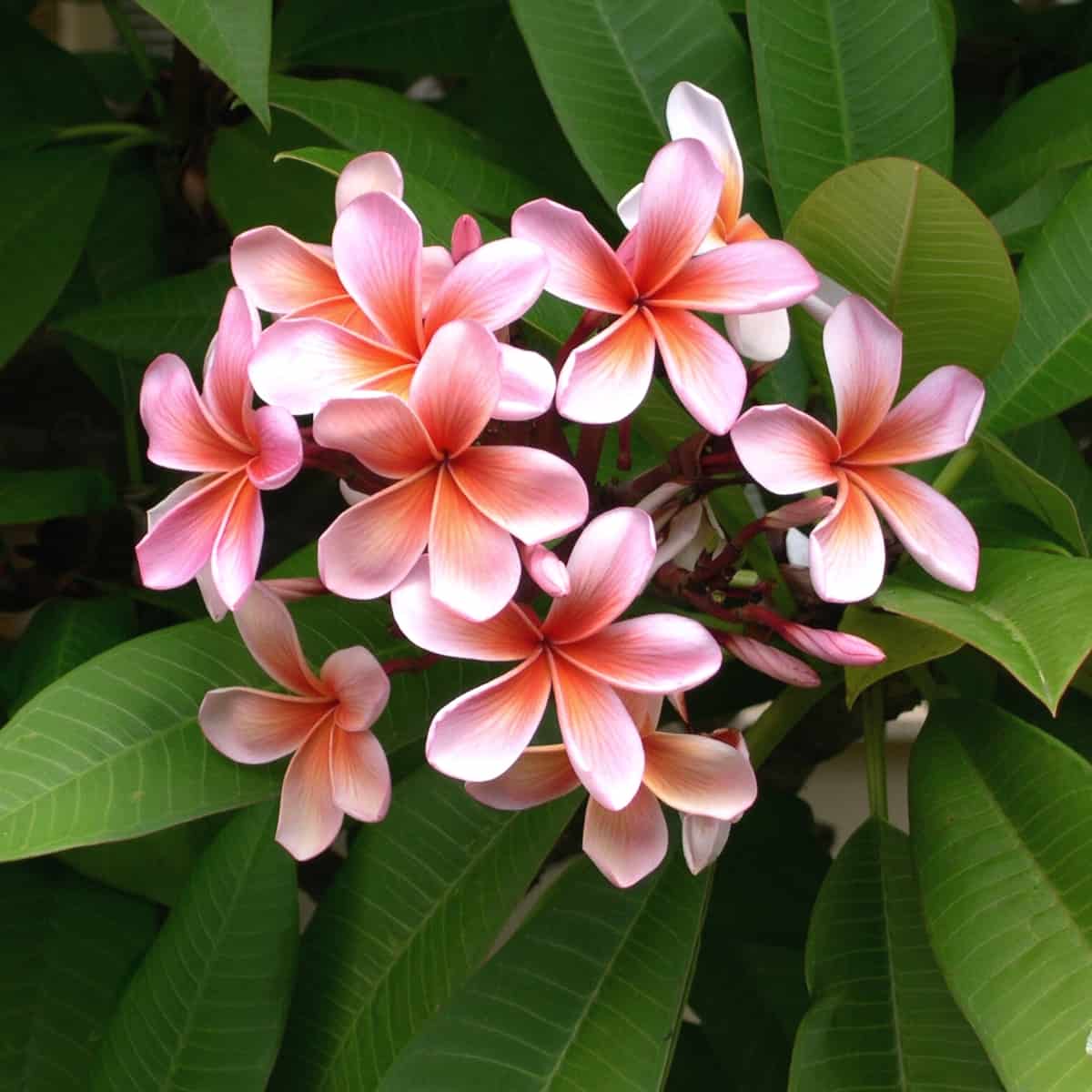
26. Protea
Proteas are a group of flowering plants that produce large, showy blooms in shades of pink, red, and white. They are native to South Africa and are often used in gardens and as cut flowers.
Protea, also known as sugarbushes, have a long and storied history as one of the most unique and beautiful flowers in the world. They are native to South Africa and were first discovered by Dutch explorers in the 17th century. Protea was named after the Greek god Proteus, who was known for his ability to change shape and form, which reflects the incredible diversity of shapes and sizes found in the protea family.
In terms of symbolism, protea is often associated with courage, diversity, and transformation, making them a popular choice for floral arrangements and as a way to celebrate strength and resilience.
They are also a symbol of hope and renewal and are often used in healing and spiritual ceremonies to bring positive energy and good fortune to those who cultivate them.
27. Pink Lady's Slipper
Pink Lady's Slipper, also known as Cypripedium acaule, is a type of orchid that produces unique, slipper-shaped blooms in shades of pink, white, and purple. It is native to North America and is often found in woodland areas.
The Pink Lady's Slipper is known for its distinctive blooms, which are pollinated by bees and flies, and its ability to tolerate shade, making it a great addition to woodland gardens. However, it is also a protected species in some areas, so it is important to check local regulations before attempting to grow or collect Pink Lady's Slipper.
28. Peruvian Lily
The Peruvian lily, also known as Alstroemeria, is a group of flowering plants that produce delicate, trumpet-shaped blooms in shades of pink, red, orange, yellow, and white. They are native to South America and are often used in gardens and as cut flowers. The Peruvian lily is known for its long-lasting blooms, which can last for up to two weeks in a vase, as well as its vibrant colors and unique markings.
Peruvian lilies have a rich history that dates back to the Inca civilization in South America. They were named after the Swedish botanist Clas Alströmer, who introduced them to Europe in the 18th century.
In terms of symbolism, Peruvian lilies are often associated with friendship, devotion, and prosperity, making them a popular choice for floral arrangements and as a way to celebrate important milestones and special occasions. They are also a symbol of endurance and strength and are able to thrive in a variety of climates and conditions.
29. Purple Coneflower
Purple coneflowers, also known as echinaceas, are a group of flowering plants in the Asteraceae family, that produce large, daisy-like blooms in shades of pink, purple, and white.
Pale purple coneflowers have a rich history in Native American culture, where they were traditionally used for medicinal purposes. The plant was believed to have immune-boosting and pain-relieving properties and was used to treat a variety of ailments such as sore throats, toothaches, and wounds.
In terms of symbolism, Purple Coneflowers are often associated with strength, courage, and resilience, and are believed to bring good luck and protection to those who cultivate them. They are also a popular choice for attracting butterflies and bees to gardens and are admired for their vibrant purple petals and distinctive cone-shaped centers.
Today, Purple Coneflowers are widely cultivated and used in herbal supplements, as well as in gardens and floral arrangements, where they continue to bring joy and beauty to those who appreciate them.
30. Pencil Cholla
Pencil Cholla, also known as Cylindropuntia ramosissima, is a species of cactus that is native to the southwestern United States and northern Mexico. It is a shrubby, branching cactus that can reach heights of up to 6 feet. Its distinctive feature is its long, slender, and spiny stems, which resemble pencils. The stems are green when young and turn gray as they mature.
Pencil Cholla blooms in late spring to early summer, producing small, pinkish-purple flowers. This cactus is well-adapted to hot, arid environments and is a common sight in desert landscapes. However, its spines can cause injury, and it is best admired from a safe distance.
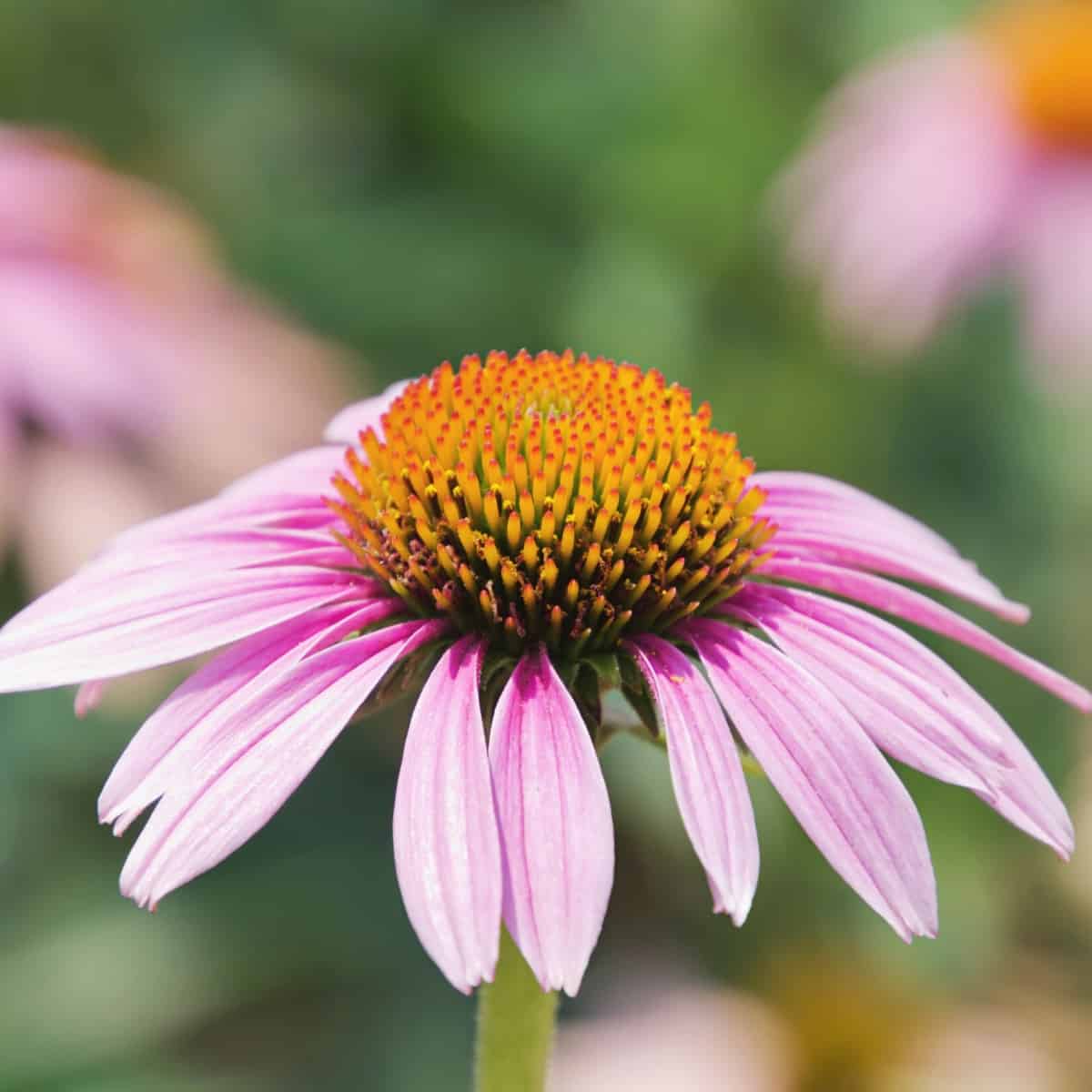
31. Pyracantha
Pyracantha, also known as firethorn, is a group of flowering plants that produce clusters of small, white, or pinkish flowers whose pink color gives way to bright red or orange berries. They are native to Asia and Europe and are often used in gardens as ornamental shrubs.
Pyracantha has a long history of use in gardens and as a hedge plant. Native to Europe and Asia, the plant was valued for its ability to form an impenetrable barrier due to its thorny branches.
In terms of symbolism, pyracantha is often associated with protection and security, as well as with courage and determination. The bright red berries of the plant are also a symbol of abundance and prosperity and were often used in traditional medicine to treat various ailments.
32. Pot Marigold
Pot marigold, also known as Calendula officinalis, is a type of flowering plant that produces bright, daisy-like blooms in shades of orange and yellow. It is native to southern Europe and is often used in gardens and as a medicinal herb. The Pot marigold is known for its many medicinal properties, including its ability to soothe skin irritations, reduce inflammation, and boost the immune system. It is also a popular addition to culinary dishes and herbal teas. Pot marigolds are easy to grow and can be grown in gardens, containers, or as indoor plants.
33. Pineapple Sage
Pineapple sage, also known as Salvia elegans, is a type of sage that produces bright red, tubular vibrant flowers with a fruity pineapple scent. It is native to Mexico and Central America and is often used in gardens as an ornamental herb or as a culinary herb to add a fruity flavor to dishes. The Pineapple sage is also popular with pollinators such as bees and butterflies, making it a great addition to any pollinator garden.
34. Polka Dot Plant
Polka dot plant, also known as Hypoestes phyllostachya, is a type of flowering plant that produces small, spotted leaves in shades of light pinks, white, and red. It is native to Madagascar and is often grown as a houseplant or in outdoor container gardens. While the Polka dot plant does produce small, inconspicuous blooms, it is primarily grown for its attractive foliage, which can add a splash of color and texture to any indoor or outdoor space.
35. Pineapple Lily
Pineapple lilies, also known as Eucomis, are a group of flowering plants that produce unique, pineapple-shaped blooms in shades of white, pink, and purple. They are native to southern Africa and are often used in gardens as ornamental plants.
Pineapple lilies are known for their attractive foliage, which forms a rosette at the base of the plant, as well as their distinctive flower spikes, which can reach up to 2 feet tall. They are also drought-tolerant and easy to grow, making them a great addition to low-maintenance gardens.




Comments
No Comments